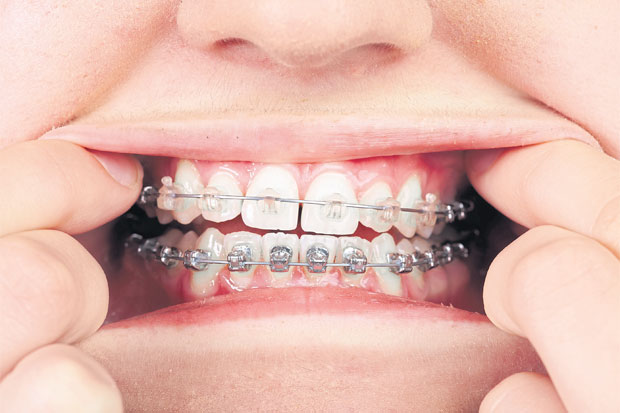
Every time Dr Somjit peers inside a new mouth, she's worried what she might find. In the past six years of providing orthodontic treatment, she has seen about 100 cases of teeth gone wrong.
"I realise it's not the work of an orthodontist," she said.
There are close to 600 certified orthodontists in Thailand, but with universities offering very few slots for students seeking specialisation in the area, hundreds of dentists have turned to private education to cash in on the demand.
The rising number of general dentists turning to short courses, which began to become popular three years ago, has led to growing concerns about patient safety among those trained under the formal system such as Dr Somjit, who asked for her real name not to be disclosed due to the sensitivity of the issue.
One of her earliest encounters happened in 2007 when she started dating a man who would later become her husband. Dr Somjit, who was then still a general dentist, was polishing her boyfriend's teeth when she noticed malocclusion -- misalignment of the teeth.
She decided to accompany him on his next dental appointment and, after finding out that the dentist was not an orthodontist, she immediately took him to see another specialist.
Dr Somjit can recall close to 100 cases where patients switched to her due to substandard treatment from a non-orthodontist.
"Many of them were surprised to learn that their previous doctors weren't really orthodontists," she said.
'LOW-GRADE CLINICS'
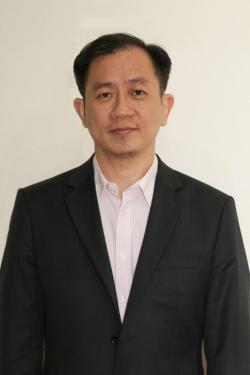
Clinical: Thai Association of Orthodontists president Chairat Charoemratrote. PHOTO: SUPPLIED
When Dr Joe opened his dental clinic on Rama II Road in Bangkok in 1988, he managed to operate for the next two decades with the help of only one or two staff. He would spend most of his days scaling and polishing, extracting and filling teeth for those living on the outskirts of the capital, which provided him with a relatively meagre income.
That all changed when he decided to employ an orthodontist five years ago.
"I wouldn't have been able to survive otherwise," said Dr Joe, who asked to be identified only by his nickname. "Nowadays, clinics that don't offer orthodontic treatment are considered low-grade clinics operated by non-dentists."
With most orthodontists preferring to work at large private hospitals or clinics located in the inner city, Dr Joe managed to recruit a dentist who had private training in orthodontics. Even then, the widely used 80:20 ratio of revenue sharing meant that for each orthodontic patient, Dr Joe would receive only 20% of the income.
Like other dental clinic owners frustrated by the revenue-sharing arrangements, Dr Joe found a way to reduce his dependence by enrolling on a private orthodontics course.
"People are seeing all these general practitioners [undergoing non-conventional training] and they're thinking 'I can do it too,'" said Dr Joe. "And so this trend emerged."
The one-year course at a clinic near Ngam Wong Wan was taught by a retired Mahidol University lecturer who used to head the university's orthodontics department. The course cost around 500,000 baht, which included over 100,000 baht worth of equipment. >>
>> "The lecturer had great teaching skills and made it seem like [orthodontics] wasn't something that hard to practise," said Dr Joe, who attended classes one or two days a week.
Dr Joe completed his studies four years ago but only started offering his own services last year at his new clinic on Lat Phrao Road.
"I wasn't confident in myself and I was afraid of failing," said the 56-year-old. "But when I finally started my first case, it turned out to be less scary than I thought."
LONG AND WINDING PATH
Thailand's Dental Act does not prohibit general dentists from practising orthodontics. However, undergraduate dental students study only basic orthodontics with one or two simple cases treated with removable appliances, said Thai Association of Orthodontists president Chairat Charoemratrote.
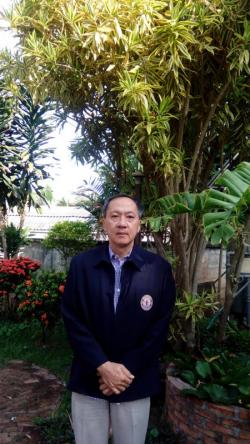
Songvuth Tuongratanaphan. PHOTO: SUPPLIED/Songvuth Tuongratanaphan
To become an orthodontist, dentists are required to undergo at least two years of postgraduate training after completing a six-year bachelor's degree in dentistry.
Seven universities provide orthodontic training, with each accepting 5-10 dentists every or every other year, which means that only 20-30 orthodontists graduate each year.
Dr Chairat, who is also dean of Prince of Songkla University's dentistry faculty, said space must be limited "to achieve high-quality orthodontists".
Residency training under the Royal College of Dental Surgeons takes three years, and students are required to undergo 3,000 hours of clinical training and treatment of 50 patients prior to achieving board certification in orthodontics by the Dental Council.
After graduating from Prince of Songkla University's dentistry faculty, Dr Somjit spent two years studying for the postgraduate entrance exam while working at a private clinic. In the first year, she applied to all four universities that were open for applications, but she failed to win admission. In the second year, she was one of six applicants accepted into Khon Kaen University's orthodontics department out of 80 who applied for admission.
"Two years is considered average as some people take four or five years flying around the country to take the exams before they are accepted," said the 37-year-old, who graduated in 2010.
For three years, she studied from Monday to Friday from 8am to 4pm.
At weekends she works at the faculty, where she has gone through over 60 patient cases under the supervision of her lecturers. Even now, she still has some concerns when faced with cases she considers difficult.
"University is the best education one can seek, and those who choose to study in the system are those who want to do things in a straightforward manner," Dr Somjit said.
PRIVATE EDUCATION
When Siam Orthodontic Center was opened over a decade ago in Siam Square by Watana Mathurasai, a former head of Chulalongkorn University's orthodontics department, it was the talk of the town among the dental community.
The centre, which has since relocated to the Rama V Road area, operates as a clinic and training centre equipped with 30 dentist chairs, offering orthodontic courses costing up to a million baht, according to people familiar with the issue.
The centre now operates under the Orthodontic Society and Research of Thailand, where Dr Watana serves as president.
Dr Watana declined Spectrum's request for an interview, although the centre is widely regarded as providing education of a quality almost on a par with university education due to its lecturers, who are mostly from Chulalongkorn University.
Graduates attend a lavish graduation ceremony, with certificates in 2004 handed out by Lt Gen Phisal Thepsithar, who was then president of the Dental Council, according to pictures posted on the website of the Orthodontic Society and Research of Thailand. Lt Gen Phisal, who also taught at the centre at the time, said he was acting in a private capacity and that the council had no involvement in the ceremony. The centre is not among the list of academic institutions approved by the Dental Council or the Office of the Higher Education Commission.
But while the centre has earned a good reputation among the dental community, other private education options are not nearly as respected.
Dr Chairat of the Thai Association of Orthodontists said most courses offered by the private sector last only one or two days, while others are part-time courses that can last up to two years. However, not all courses include clinical training, while the number of instructors, patients and length of patient care can vary.
Courses promoted by a Mahidol University professor via the Line application and seen by Spectrum offer lectures for 300,000 baht and hands-on cases for another 250,000 baht, with the latter conducted in Saraburi province. Although the details say students will complete training within two years, lessons are conducted only once a month, meaning the whole course amounts to only 24 days.
GROWING DEMAND
There are no official statistics for the number of Thais receiving orthodontic treatment, but a 1989 national oral health survey showed that 12% of 12-year-olds had misaligned teeth that may require orthodontic treatment.
"That truth still holds today," said Songvuth Tuongratanaphan, a board member of Thailand's Dental Council. "For the past decade, Thais have been undergoing orthodontic treatment for cosmetic purposes rather than medical."
Thailand has around 15,000 dentists, up from 9,500 in 2006, according to the Dental Council. Of the total, close to 600 are orthodontists, with 229 board-certified.
Competition is often fierce, with several clinics offering promotions to attract customers who are more interested in undergoing orthodontic treatment for medical purposes. A clinic near Bearing skytrain station is now offering what it calls a "zero baht promotion", which essentially means that customers pay nothing on the day they are fitted with dental braces but are required to pay around 3,500 baht for the first instalment on the day of their first appointment, and then 1,400 baht for each of the remaining 26-30 instalments.
"We need to admit that the large demand has made dentists more eager to obtain skills in orthodontics," said Dr Songvuth. "When they can't enter the formal education system, they undertake private education instead."
He said that while private courses were once taught by retired university lecturers, the popularity surge over the past three years has caused an increase in courses offered by those who underwent non-conventional education themselves.
Dr Songvuth uses the term "continuing education" to describe private courses, and the Dental Council does not condemn the practice. Those who graduate from private institutions are able to practise orthodontics, but they are not approved by the council as a certified orthodontist.
General dentists are allowed to advertise orthodontic services in front of their clinics, but the term must not be more prominent than other dental services. The term "exclusive orthodontic care" can only be used by board-certified orthodontists.
"We can't prohibit them from attending courses, but we always tell them that they must know their limitations," said Dr Songvuth, who is also responsible for ethical issues at the Dental Council.
From 2013-16, the Dental Council received 40 complaints, with 14 related to orthodontics. Of the 14 cases, around 80% were a result of treatment by non-orthodontists.
Dr Songvuth said almost 80% of the cases involved patients still receiving treatment, making it hard to determine whether or not treatment was substandard. Some complaints related to dentists' manners.
ACCEPTING THE RISKS
One of the most heartbreaking situations Dr Somjit has faced came about three years ago when a patient sought a second opinion from her after failing to see any improvements following more than one year of orthodontic treatment.
Dr Somjit considered the case a "total mess" and told the patient that all the dental devices had to be removed and reinstalled at a cost of 45,000 baht -- around 10,000 more than the minimum price she charges -- due to the complexity of the operation. "When she heard the price, she had tears in her eyes. She told me she couldn't afford it because she had already spent a lot of money with her previous dentist," said Dr Somjit, who suggested the patient seek treatment at a public hospital.
Until this day, Dr Somjit, who practises at six clinics mainly in Chon Buri province, has a large number of patients seeking a second opinion on whether they are receiving the right treatment. The most common cases are malocclusion and slow progress in treatment. But not all the cases can be fixed, she said, depending on their severity.
"The point is whether or not non-specialists are able to separate the easy cases from the complicated ones because some cases may look easy when in fact they are not," she said.
This could lead to wrong decisions, such as cases where surgery is needed but the physician decides not to perform surgery.
The Thai Association of Orthodontists says the problem of general dentists providing orthodontic treatment is faced in every country and that the best way to solve the issue is to educate patients to seek treatment from orthodontists.
"We aren't concerned at all as long as they [general dentists] provide proper care within their limitations. Patient well-being is our primary concern," said the association's Dr Chairat.
Both the association and the Dental Council say they have been encouraging the public to check the qualifications of their dentists.
Dr Somjit said several of her patients have an understanding that all dentists providing orthodontic treatment are certified orthodontists. They are surprised that there is no consumer protection law that requires general dentists, for instance, to identify themselves as a "general dentist practising orthodontics".
"If they are aware that they are undergoing treatment by a general dentist and are able to accept the risks, I think it's fair for all sides," she said.
But Dr Joe, the general dentist practising orthodontics, maintains the treatment isn't as complicated as specialists suggest. He estimates that 90% of patients who wish to receive orthodontic treatment are non-complicated cases.
"Orthodontists may spread propaganda along the lines of requiring patients to undergo treatment by certified orthodontists only," said Dr Joe. "In reality, doctors know their own limitations. Everyone is afraid of getting sued."
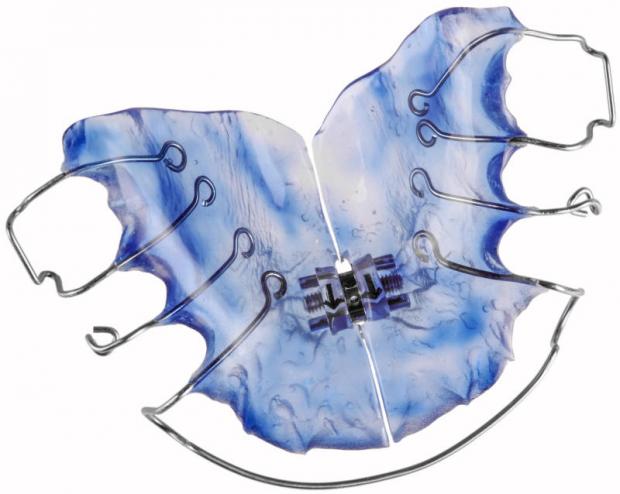
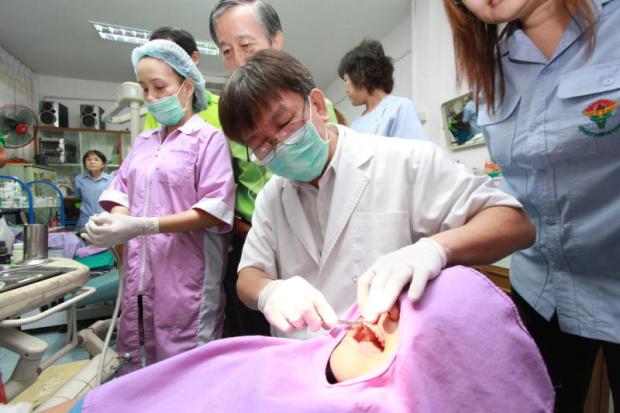
PICKING UP THE PIECES: A volunteer dentist removes teeth braces from a young patient who had them fitted at a substandard clinic in Ayutthaya. PHOTO: BANGKOK POST ARCHIVE